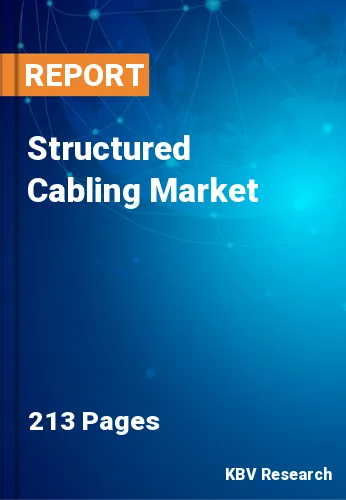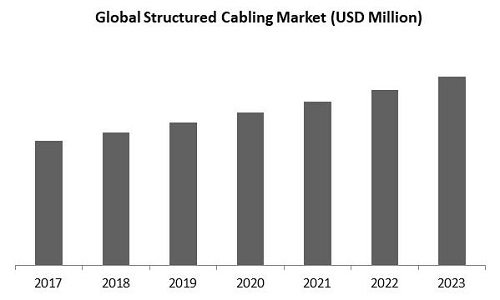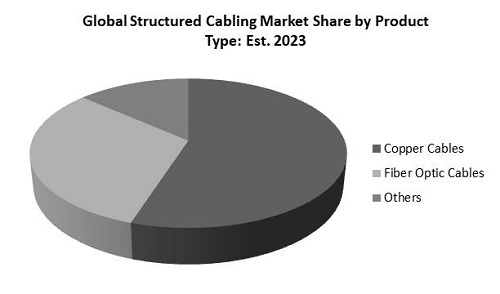
The Global Structured Cabling Market size is expected to reach $12.1 billion by 2023, rising at a market growth of 7.1% CAGR during the forecast period. Set of cables and hardware make up the Structured cabling system, making up the telecommunication infrastructure of management systems in enterprises. Telecommunication infrastructure is used to transfer voice, video, and data signals from one point to another, via a communication network. Various connecting devices and cables are used to ensure smooth network connectivity. Rapid growth in the number of Internet users and growing adoption of digital services has led exponential growth in the volume of sensitive data. The adoption of structured cabling system leads to faster data transfer rate. Increased emphasis on cost and time management, growing IoT data, need for automation of businesses, and increasing competition are the factors that have contributed to demand for structured cabling systems.
Global Structured Cabling Market Size

Based on Product Type, the Structured Cabling market segments the market into Copper Cables, Fiber Optic Cables, and Others. Based on Application, the Structured Cabling market segments the market into Data Center and LAN. Based on Vertical, the market report segments the market into Telecom & IT, Government, Industrial, Residential & Commercial, and Others. Based on Regions, the Structured Cabling market segments the market into North America, Europe, Asia Pacific, and Latin America, Middle East & Africa. The market research report covers the competition analysis of key stake holders of the Global Structured Cabling Market.
Global Structured Cabling Market Share

Key companies profiled in the report include Anixter Inc., Belden Inc., Commscope, Inc., Corning Incorporated, Furukawa Electric Co., Ltd., General Cable, Legrand S.A., Nexans S.A., Schneider Electric SE, and The Siemon Company.
Related Reports:
North America Structured Cabling Market (2017-2023)
Europe Structured Cabling Market (2017-2023)
Asia Pacific Structured Cabling Market (2017-2023)
LAMEA Structured Cabling Market (2017-2023)
Our team of dedicated experts can provide you with attractive expansion opportunities for your business.
